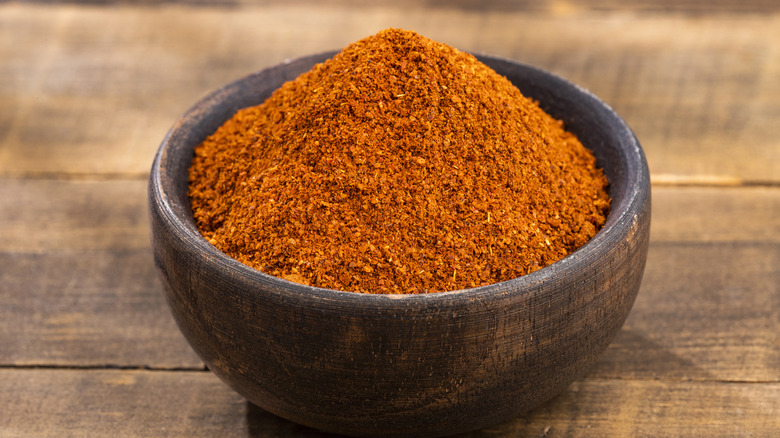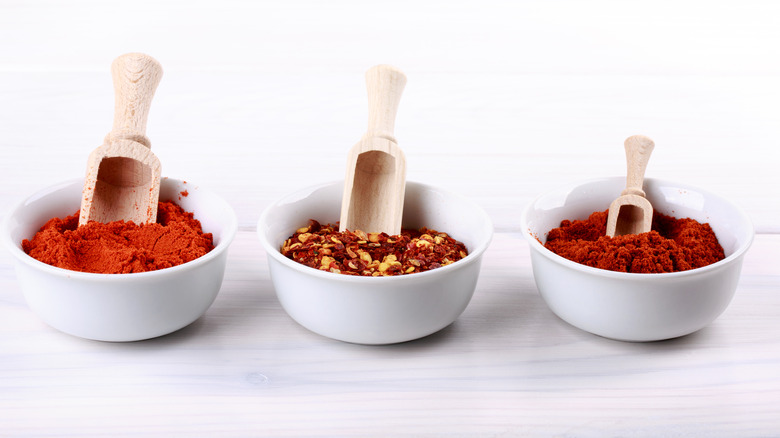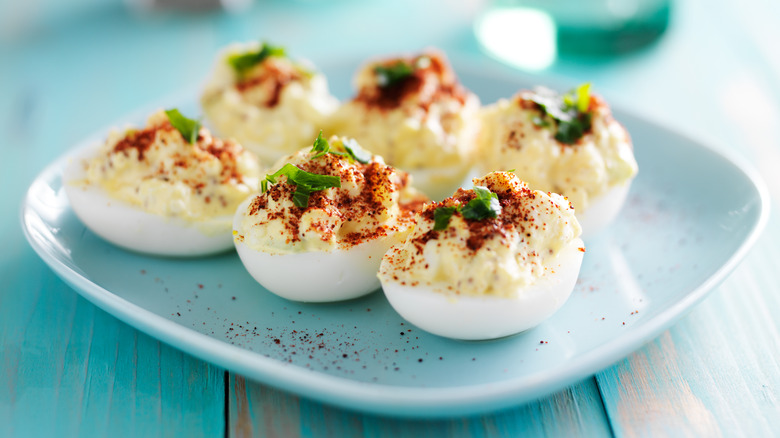Here's What Sets The 3 Different Paprika Types Apart
The next time you shop for a spice cabinet restock, you might ponder the different types of paprika. There are several varieties around the world, but three main types are commonly available to purchase: smoked, sweet, and hot paprika. Although these may seem similar at first glance, there's an important distinction among the three. Though all paprika is made from ground-up dried red pepper skin, the different varieties are made from other kinds of peppers.
Sweet paprika is the most used of the spices and most requested in recipes. It's made from sweeter, milder bell peppers and has a vibrant red coloration. Hot paprika is made from a blend of spicier red peppers, though it also has the same vivid color as its sweet counterpart. Smoked paprika, meanwhile, is made from the same red bell peppers as the sweet variety. The significant difference is that the peppers are wood-smoked prior to being dried, peeled, and crushed.
The three varieties have different flavors
Because of the different peppers used to create the types of seasoning, each kind also has a different flavor. Since sweet paprika is milder and made from sweet red bell peppers, it often has a fruitier taste. Its flavor is very subtle and not at all spicy despite its color. It makes a great garnish to add some vibrancy to savory dishes.
When you want to turn up the heat, hot paprika is the way to go. As the name suggests, it is the ideal addition for enhancing the heat in your food. Hot paprika is an acceptable substitute for cayenne pepper chili powder when you want your dishes to taste hotter.
Smoked paprika may have been treated with heat prior to being ground into seasoning, but that doesn't mean its flavor is ultra-hot. In fact, the seasoning doesn't have very much spice at all. Its taste is like that of the sweet paprika, just with a little added hint of smokiness. Since it isn't spicy, it can easily be substituted in recipes that call for sweet paprika to provide a smoky flavor profile.
They can be substituted for each other
If you decide not to choose the paprika called for in the recipe you're cooking, each can be substituted for another since they're made the same way. Just keep in mind that the different varieties will add different flavors to your dishes, so you might be adding some smoky or spicy flavor in place of the standard sweetness.
Regardless of which variety you use, you'll want to pay close attention to when the paprika should be added. As paprika is cooked, it can lose some of its flavor and coloration. Especially with the already mild taste of sweet paprika, it can rapidly diminish under heat for extended periods of time.
Instead, sprinkle on the paprika as a garnish. (It's commonly seen atop platters of deviled eggs.) The late addition to the food will create a burst of color on top of your dishes and a little added flavor — no matter which variety you choose.


